Dividend Investment Strategies…Dead in this Growth World?
On this episode of the Wiser Wealth Roundtable podcast, the team discusses dividend investment strategies and how those strategies have changed in recent years as growth stock returns continue to far exceed those of value stocks.
Listen on Apple Podcasts or watch on YouTube:
SUMMARY
Investing for Dividends
Dividend-paying companies exhibit the ability to manage cash flow in such a way that they can meet an obligation to share profits with their shareholders. Historically, these firms have had a value tilt, however, that has begun to change, and the information technology sector is now the largest dividend-paying sector in the S&P 500. Those companies that are traditionally thought of as growth companies are now paying the most dividends. Microsoft and Apple are some of the largest and most recognizable names that have joined this group of companies paying dividends. Others include Intel, Cisco, and Oracle. The technology sector has passed other sectors like utilities and energy stocks that have traditionally been the most well-known for paying dividends.
Growers vs. Payers
Dividend growers are those firms that grow their dividends as their sales and profits grow. Dividend payers are those firms that use retained earnings to pay dividends. Growers and Payers are thought of and viewed differently in the market by investors.
The dividend yield of the S&P 500 is historically low at 1.5%, whereas the S&P High Yield Dividend Aristocrats is yielding around 2.75% but we are also at historically high prices right now. There is an inverse relationship between dividend yield and stock price. There are two types of returns for the major indexes we track: price return and total return. Price return is the difference between the current price of the stock and the price you paid for the stock. It can either be negative, zero, or positive. The total return is price return + dividend return. Often, you will see a difference in price return and total return. It might go from negative to positive, just because you consider the dividend payment.
The S&P High Yield Dividend Aristocrats® index is designed to measure the performance of companies within the S&P Composite 1500® that have followed a managed-dividends policy of consistently increasing dividends every year for at least 20 years. The difference between the aggregate price return of the companies vs. the aggregate total return of the companies is 46% higher when you consider the compounding effect of reinvesting the dividends.
What does this mean? As stock prices fluctuate, dividend investors continue to collect dividend payments that increase their overall investment returns as they are reinvested. Price decline for dividend growers and payers has been less than for companies that don’t pay a dividend or cut their dividend in downturns like the COVID-19 crisis we experienced last year.
Over the last 5-10 years, investors following a growth strategy have far outpaced a dividend investment strategy. From a portfolio modeling standpoint, why wouldn’t investors choose to take the higher growth strategy and shave off the gains for income? Because the dividend investor is looking for a stream of income that is consistent year after year. It is a different style of investing. Both are legitimate but on the growth example, you are still dependent upon those growth companies being valued higher each year. On the dividend investment side, those companies that increased their dividends in 2020 did so at a rate of about 8% which more than offset inflation of around 1.5%.
Making a decision about whether it will be a growth year or a value year is difficult. At Wiser, we want to own both growth and value in our portfolios, although we currently have a slight tilt toward technology. It is very difficult to get income from fixed-income investments these days. As interest rates have come down, you don’t see the same appreciation in bond prices as you do in equity prices. The dividend aristocrat strategy over the past 5 years has averaged over 11% annualized return.
However, it is also important to remember not to chase the highest-yielding companies because those companies could be riskier. Those firms could be paying dividends out of retained earnings as a way to boost their stock price.
At Wiser Wealth, we build portfolios based on the client’s needs and risk tolerance. Our approach has always been focused on long-term investing.
LINKS:
Learn more about Casey Smith and connect with him on Twitter.
CONNECT:
Twitter, Instagram, Facebook, LinkedIn, and YouTube.
Learn more about A Wiser Retirement podcast and access previous episodes.
Share This Story, Choose Your Platform!
Wiser Wealth Management, Inc (“Wiser Wealth”) is a registered investment adviser with the U.S. Securities and Exchange Commission (SEC). As a registered investment adviser, Wiser Wealth and its employees are subject to various rules, filings, and requirements. You can visit the SEC’s website here to obtain further information on our firm or investment adviser’s registration.
Wiser Wealth’s website provides general information regarding our business along with access to additional investment related information, various financial calculators, and external / third party links. Material presented on this website is believed to be from reliable sources and is meant for informational purposes only. Wiser Wealth does not endorse or accept responsibility for the content of any third-party website and is not affiliated with any third-party website or social media page. Wiser Wealth does not expressly or implicitly adopt or endorse any of the expressions, opinions or content posted by third party websites or on social media pages. While Wiser Wealth uses reasonable efforts to obtain information from sources it believes to be reliable, we make no representation that the information or opinions contained in our publications are accurate, reliable, or complete.
To the extent that you utilize any financial calculators or links in our website, you acknowledge and understand that the information provided to you should not be construed as personal investment advice from Wiser Wealth or any of its investment professionals. Advice provided by Wiser Wealth is given only within the context of our contractual agreement with the client. Wiser Wealth does not offer legal, accounting or tax advice. Consult your own attorney, accountant, and other professionals for these services.





